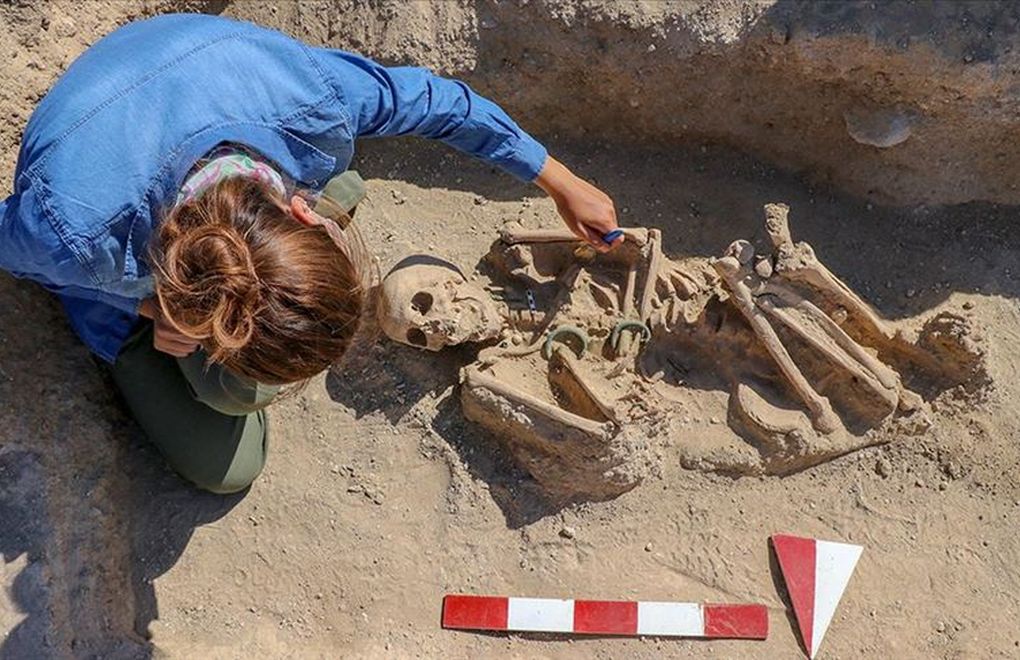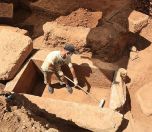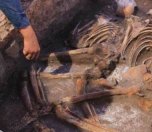Click to read the article in Turkish / Kurdish
Having started three years ago, the excavation works at a 2,750-year-old necropolis are still ongoing in Gürpınar in Turkey's eastern province of Van.
Led by Prof. Rafet Çavuşoğlu, the Head of Van Yüzüncü Yıl University Department of Archaeology, the team of experts and academics have recently discovered a Urartu woman buried with jewelry.
As reported by the state-run Anadolu Agency (AA), a skeleton of a Royal Urartu woman buried with jewelry was found during the archaeological excavations at a necropolis of the Urartu period on August 31.
Excavation works continue at the necropolis where aristocrats are believed to be buried. As part of these works, a royal woman skeleton was found wearing pendulum earrings, a ring on her finger, a necklace on her neck, an ornamental pin, and dragon-headed bracelets on her both arms.
'She has a set of jewelry on her'
Speaking to the AA, Prof. Rafet Çavuşoğlu has indicated that they started their excavation works in 2017 and have discovered very important information in the necropolis since then. He has underlined that this year, they have once again understood how important a role the jewelry had in the burial ceremonies of the Urartu people.
Estimating that the recently discovered skeleton belonged to a woman aged 20-25, he has noted that what is important here is that she was buried with jewelry. "She has a set of jewelry on her, so to speak," Çavuşoğlu has noted. He has also added that the skeleton belonged to a royal woman.
Reiterating that the woman was buried while wearing pendulum earrings, a ring on her finger, a necklace on her neck, an ornamental pin, and dragon-headed bracelets on her both arms, Prof. Rafet Çavuşoğlu has said, "It is understood that she was buried with all jewelry that she used to wear in daily life." He has also remarked that this recent finding shows how much Urartu women were fond of jewelry.
"The most important thing about this is that the ones buried here are not common people, but the spouses and family members of the ruling class in the castle. One of the most important indicators for this is that she still has the ring on her left finger. With this ring, we have perhaps found the first archeological evidence of a marriage act," he has added.
About the UrartuUrartu is a geographical region which is commonly used as the exonym for the Iron Age kingdom also known by the modern rendition of its endonym, the Kingdom of Van, centered around Lake Van in eastern Anatolia. The kingdom rose to power in the mid-9th century BC, but went into gradual decline and was eventually conquered by the Iranian Medes in the early 6th century BC. * Source: Wikipedia |
(EMK/SD)







